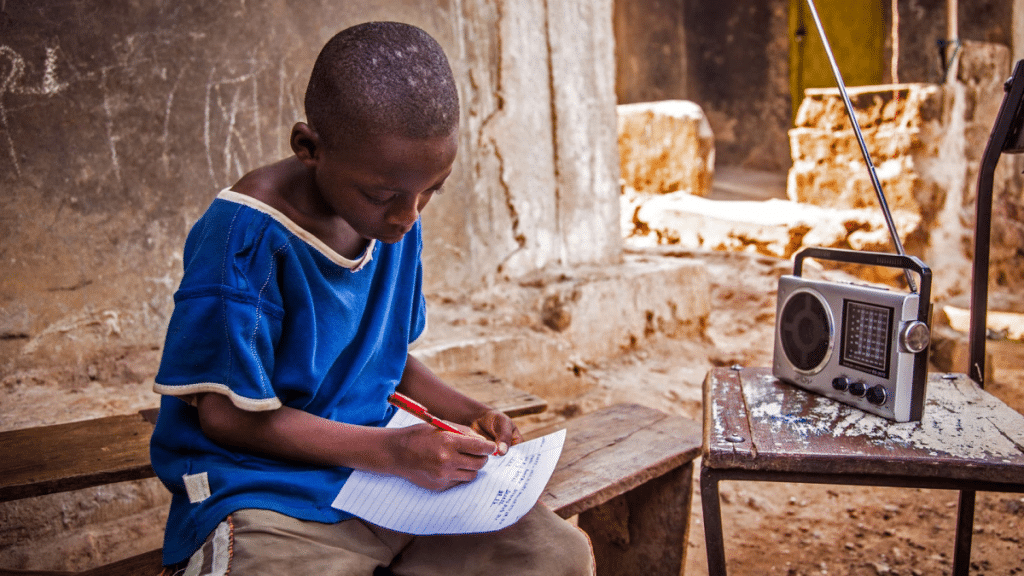Are you wondering about the changing entertainment space in Africa? Edutainment, the blend of education and entertainment, has long been a powerful tool in Africa. It has evolved with the changing technological landscape, offering people a mix of learning and amusement, often using stories, music, and visuals.
In the early stages, radio was the primary vehicle for African edutainment. It was pivotal in educating vast audiences, particularly in rural areas with limited access to formal education. Radio programs offered a mix of music, drama, and talk shows that entertained and taught lessons on health, agriculture, and social values.
The shift towards digital platforms such as YouTube has transformed edutainment, making it more accessible, engaging, and interactive for African audiences.
The Rise of Radio in African Edutainment
In the mid-20th century, as many African countries gained independence, radio emerged as a key tool for nation-building and education. It became the continent’s most accessible medium, especially in regions with low literacy rates and limited infrastructure.
Educational programs aired on national and community radio stations tackled various topics, from health education to farming techniques. Shows like Tusemein East Africa and Mugambo Jwetu in Kenya blended entertainment with educational content, often featuring local languages to reach wider audiences.
These programs also fostered social development by raising awareness about family planning, nutrition, and disease prevention. Governments and NGOs alike saw the potential of radio to reach people in even the most remote areas, where schools were scarce. The intimacy and immediacy of the radio format allowed for personal stories and folk music, familiarizing listeners with important concepts in a relatable manner.
Moreover, educational radio dramas have become an essential part of national culture in countries such as Nigeria, South Africa, and Ghana.
Dramas, particularly, were a favorite for incorporating morality lessons, social critique, and practical advice. This period marked the golden age of African edutainment on radio, using creativity to inform and educate the masses.
Television and the Introduction of Visual Edutainment
The introduction of television in Africa further expanded the horizons of edutainment. In the 1980s and 1990s, countries like South Africa, Kenya, and Nigeria saw the rise of educational TV shows designed for children and adults alike.
Television had a visual edge over radio, making learning more impactful through images, animations, and interactive segments. For many African children, educational shows became their first exposure to language learning, basic arithmetic, and social skills. The vivid visuals allowed complex topics to be broken down simply and understandably.
However, the reach of television was limited compared to radio. High costs, poor infrastructure, and unreliable electricity meant that TV edutainment remained concentrated in urban areas or accessible to families who could afford it.
Nonetheless, it set the stage for what would come next the digital revolution, which made edutainment more inclusive and far reaching.
Internet and Mobile Technology
The early 2000s brought significant changes to African edutainment with the rise of the internet and mobile technology. As mobile phones became more affordable, especially smartphones, many Africans began to access the internet for the first time through these devices.
During this time, YouTube emerged as a powerhouse for African edutainment. This video-sharing platform allowed creators across the continent to upload content that blended cultural stories, tutorials, documentaries, and educational lessons.
The format was appealing because videos could be paused, replayed, and shared widely.
YouTube
Today, YouTube has revolutionized the edutainment landscape across Africa. The platform’s accessibility and visual appeal make it a favored tool for African content creators to educate and entertain simultaneously.
YouTube offers endless possibilities, from educational channels that teach science, history, and math to lifestyle influencers promoting African culture and values.
One of the key strengths of YouTube in Africa is its ability to democratize content creation.
Unlike traditional media, where high production costs and limited broadcasting networks control the flow of information, YouTube allows anyone with a smartphone and internet connection to share their knowledge and creativity. This has led to a surge in local content production, often rooted in cultural narratives and languages.
The Role of Local Languages in Digital Edutainment
One of the most remarkable aspects of the growth of edutainment in the digital era is the increasing use of local African languages.
While early radio and TV programs typically used major national or colonial languages like English, French, or Swahili, YouTube has allowed creators to produce content in their native tongues. This linguistic diversity has been essential in making educational content more inclusive, reaching children and adults who may not be fluent in more widely spoken languages.
Challenges and Opportunities
Despite its many successes, the evolution of African edutainment from radio to YouTube faces challenges. Limited access to reliable internet, high data costs, and inadequate infrastructure in rural areas still hinder the widespread adoption of digital platforms.
Moreover, while YouTube and other online platforms offer great potential, they also raise concerns about the digital divide, where those in underdeveloped areas may lag in accessing these resources.
However, opportunities abound. With the continued growth of mobile internet access and falling data costs, digital edutainment in Africa is expected to expand even further.
African content creators are increasingly tapping into global platforms like YouTube to reach local and international audiences, showcasing African stories, innovations, and educational tools to the world.
Conclusion
The journey of African edutainment from radio to YouTube reflects the broader evolution of technology and education across the continent.
YouTube enable content creators to reach millions, the blend of education and entertainment continues to shape learning experiences.
As technology advances and internet access improves, African edutainment will undoubtedly play a key role in shaping the continent’s future, making learning both accessible and enjoyable for all.
